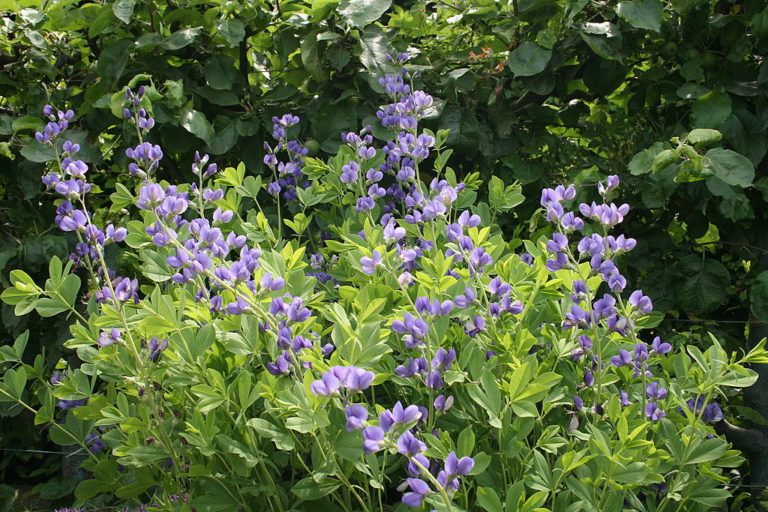Wild Blue Indigo is a tall (three to four feet), sturdy, sun-loving, shrub-sized perennial with upright racemes of pea-like flowers ranging from bright blue to deep indigo held above the foliage. Being a legume, it can fix nitrogen and therefore tolerates poor soils gracefully. It blooms in May and June. The blue of the flowers complements the bright green foliage which remains attractive all summer, even after blooming. The flowers are wonderful as cut flowers, and the ensuing dark black seed pods are valued for dried arrangments as well. It often has low seed viability, but it does reproduce by rhizomes. Being deeply rooted, Wild Blue Indigo is difficult to move once established, but also fairly drought tolerant. This is a long lived plant, flowering for many years. It is known to be host to some beautiful butterflies, among them the Eastern Tailed Blue, Orange Sulphur and Clouded Sulphur butterflies.
NURSERY HOURS
Wednesday: 10-4 Thursday: 10-6 Friday-Saturday: 10-4 Sunday: 12-4
Baptisia australis

Key Info
Scientific Name: Baptisia australis (L.) R. Br.
Common Names: Wild Blue Indigo, Blue False Indigo
Family Names: FabaceaeFabaceae (Pea Family)
Plant Type: Herbaceous perennial
Light Requirement: Full sun
Flower Color: Blue
Additional Info
Habit: Upright, multi-stemmed shrubby perennial with very deep roots
Height: 2'-4'
Spread: 3'-4', up to 6' at maturity
Soil Conditions: Medium to dry soils, neutral to slightly acid pH, sandy, clay, loam
Leaves: Leaves are trifoliate, arranged alternately on the mostly unbranched stems. They blacken rapidly in fall.
Flowers (or reproductive structures: Upright racemes of blue/purple clusters of flowers typical of pea flowers, with an upper banner petal and two wing petals spread out to the sides and partly enclosing a "keel" petal. The blooms occur on long racemes, maturing from the bottom up.
Fruit: Inflated bean-like pods develop from the flowers. Pods emerge greenish, turning black in fall, conaining brownish, hard, rounded seeds ripening 6 weeks after flowering.
Natural Distribution: Wood edges, meadows
USDA Hardiness Zone: 3 to 9
USDA Wetland Indicator Status in NC: FACU
Pollination: Queen bumblebees are the primary pollinators of the flowers, where they feed on nectar primarily
Wildlife Connections: The flowers attract large numbers of native bees and bumble bees. Also Baptisias are host plants for the larvae of several butterfly species (including Orange Sulphur, Clouded Sulphur, Frosted Elfin, Eastern Tailed Blue, Hoary Edge, Wild Indigo Duskywing, and the Jaguar Flower Moth) as well as a range of others: skippers, moths, weevils, beetles, bugs and thrips (Illinoiswildflowers.info).
Propagation: By seed (collect when pods begin to split) or by divsion in fall or spring when the plant is dormant.
